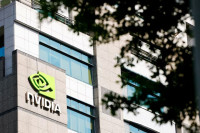Science & Technology
Does the internet have a gatekeeper?
Trying to figure out who runs the internet is like trying to decipher who gave the monkeys permission to run the zoo.
Spandan Pokhrel
‘Just who exactly controls the internet?’ It’s a question that’s been on everyone’s minds since the dawn of the digital age. Some people think that it’s the Internet Service Providers (ISP), but come on, they’re just glorified tech support with a knack for overcharging. In Nepal, we have ISPs like WorldLink, ClassicTech, Vianet, and more. If WorldLink suddenly decides to pack up and stop providing the internet, we won’t be left in the dark ages because other ISPs will swoop in to save the day. This means that ISPs are not really the head of the internet. The real power doesn’t really lie with the government either. Sure, they may be able to censor a few sites and delete the occasional Facebook post, but they’re too busy arguing about tax reform to worry about controlling the entire internet.
Well, it seems like some folks out there believe that the internet is controlled by these big shots like Facebook, Google, and Microsoft. But let’s be real here, just because they’re loaded with cash doesn’t mean they can control everything.
And then there are those who think companies like GoDaddy are the ‘head’ of the internet because they provide domain names and hosting services. But come on, if GoDaddy went down the drain, there are plenty of other fish in the sea who can sell us domain names and host our websites. It’s not like they hold the keys to the Internet kingdom or anything.
One more question arises here, “Who allows the companies like GoDaddy to sell the TLDs (Top Level Domains) like .com, .org, .net?”
Well, the bottom line is this question is like trying to figure out who gave the monkeys permission to run the zoo.
So with all this technology that is constantly changing and evolving, who actually controls the internet? The simple answer is no one. There isn’t a CEO or president of the internet. In fact, no one person, company, or government runs it. Instead, it is a decentralised network of networks, with many different organisations like ICANN (Internet Corporation for Assigned Names and Numbers), IETF (Internet Engineering Task Force), W3C (World Wide Web Consortium), ISOC (Internet Society) playing important roles in its operation and management. While each of these entities has a role to play in the functioning of the internet, none can claim to be its ultimate ‘head’.
ICANN (Internet Corporation for Assigned Names and Numbers) is a non-profit organisation that plays a critical role in the operation and management of the internet. ICANN is responsible for coordinating unique identifiers used on the internet, such as domain names, IP addresses, and protocol parameters. This means that ICANN is in charge of assigning domain names and IP addresses, as well as managing the internet’s root zone file, which contains information about all top-level domain names.
Elaborating the role of ICANN in an easier way is when you type ‘www.google.com’ into your web browser, the browser first needs to know the numerical address ie IP address like 142.250.64.100 to which it needs to connect.
But for humans, it’s much easier to remember and use domain names, such as www.google.com, rather than IP addresses. So, when you type a domain name into your browser, it needs to be translated into an IP address to locate the server and establish a connection.
This translation process is done by the Domain Name System (DNS), which is a global network of servers that store and translate domain names into their corresponding IP addresses. ICANN is responsible for ensuring that the DNS operates smoothly and that all domain names are unique and properly registered.
Coming back to our question about who allows the companies like GoDaddy to sell the TLDs, the answer is ICANN works with domain name registrars like GoDaddy, Namecheap, and others to sell domain names to individuals and organisations. ICANN is further responsible for managing the policies and procedures that govern the use of domain names and IP addresses, and for ensuring the stability and security of the internet’s addressing system.
Further, ICANN is also responsible for ccTLDs (country code top-level domain) like .com.np, .edu.np for Nepal, .uk for the United Kingdom, .in for India etc. It is responsible for establishing agreements with the ccTLD managers for each country, which outline the conditions and obligations for the operation and management of the ccTLD. These agreements ensure that the ccTLDs are operated in a secure, stable, and reliable manner and that they comply with the technical standards and policies set by ICANN. The ccTLD managers are responsible for the day-to-day operation of the country’s domain name system (DNS), including registration of domain names, allocation of IP addresses, and management of the DNS infrastructure. ICANN ensures that the ccTLD managers are fulfilling their obligations under the agreements and that they are following the technical standards and policies set by ICANN. In addition, ICANN works with the ccTLD managers to develop policies and guidelines for the operation of the ccTLDs. This includes guidelines for the registration and use of domain names, dispute resolution procedures, and policies for dealing with issues such as spam and cybersecurity.
ICANN is also responsible for the allocation of new gTLDs (generic top-level domain). For example, in 2012, ICANN began a new program to expand the number of gTLDs available, allowing for the creation of new generic top-level domains such as .app, .blog, .shop, and more. This expansion consequently opened up new opportunities for individuals and organisations to create more specific and memorable domain names for their websites, and has led to a more diverse and competitive domain name market.
We all know that the average cost for a .com domain is around $10 to $50, which might be expensive for the small-scale business making it difficult for them to establish and maintain an online presence. ICANN has been criticised for the high cost of acquiring and maintaining domain names. The process of applying for a new TLD is complex and expensive, with significant upfront costs and ongoing maintenance fees. This has led to a concentration of power and control over the domain name system in the hands of a small number of established players, rather than fostering a more open and competitive marketplace. Critics argue that this lack of competition and high fees have contributed to the concentration of power and control over the domain name system, resulting in limited choices for consumers and businesses.
In conclusion, while the internet may not have a single ‘gatekeeper’, ICANN plays a critical role in ensuring its stable and secure operation. By managing the allocation of unique identifiers and enforcing policies and standards, ICANN helps to maintain the integrity of the internet’s addressing system. As the internet continues to evolve and grow, ICANN will undoubtedly face new challenges and responsibilities. However, with its global community of stakeholders and dedicated staff, ICANN is well-positioned to continue its important work as a key player in the ongoing development of the internet.




 11.12°C Kathmandu
11.12°C Kathmandu










